18 fun things that you probably did not know about ...

The simple act of defecation is one of the most universal of experiences on the planet. Let's look at how we are similar to our smaller brethren, with the help of 18 research, but little-known facts about the feces.
1. It is not clear why coffee causes the urge to defekatsii

Yes, caffeine can be responsible for this, but only partially. Studies conducted with the help of anal probes, show that even without the caffeine in the last two sections of your colon having intense contractions (this is the part of the colon, which in medicine is known as "rectosigmoid portion"). But really interesting it is that the reduction has been found to begin in the first four minutes of coffee consumption. "It seems unlikely," say the authors of "The Influence of coffee on the distal colon function" that coffee may affect the rectosigmoid area so quickly. "This can be either the intestines or the circulatory system».
At the end, the authors concluded that if coffee affects the large intestine only indirectly. They note that coffee, acting on specific receptors in the stomach and small intestine, can cause so-called "gastrokolonichesky answer." In further studies it was found that the "response" by various neural and hormonal mechanisms and causes the urge to defecate. The principle of operation of these mechanisms have yet to figure out.
2. The name of the first author of "The effect of coffee on the function of the distal colon" - Brown in English the «brown» means "brown". Name of the second author of Cannes (if the names of Cann remove one «n», we get «can» - «toilet seat"). Last name of the author of the third Reed («read» - «read"). This name is not as funny as the Brown or Cannes, however, and it becomes very fun, when you consider that ...
3. ... some people say that during a visit to the bookstore they have a great desire to go to the tualet

This is called "Phenomenon Mariko Aoki." It is so named in honor of the woman who first described it in his essay in 1985, the year. Here is a quote from Wikipedia:
Among the possible causes of this phenomenon appears the smell of ink and paper. This smell can produce a laxative effect because it is associated with reading at home, in a closet. However, the real proof of this theory is still no.
4. Fossilized feces are called "coprolites"

It is derived from two Greek words. "Kopros", which means "dung" and "lithos" meaning "stone". In the picture above you see fecalith length of 80 cm (one of the longest, who managed to find a scientist). He was recently sold at auction.
Quote from the auction page:
It boasts a surprisingly pale, yellow-brown tint, and incredibly detailed texture surface along its great length. The origin of this remarkable object is unknown, but it is, nevertheless, it remains the largest coprolite ever found.
blockquote> 5. Coprolites have been called "the next frontier of palaeontology"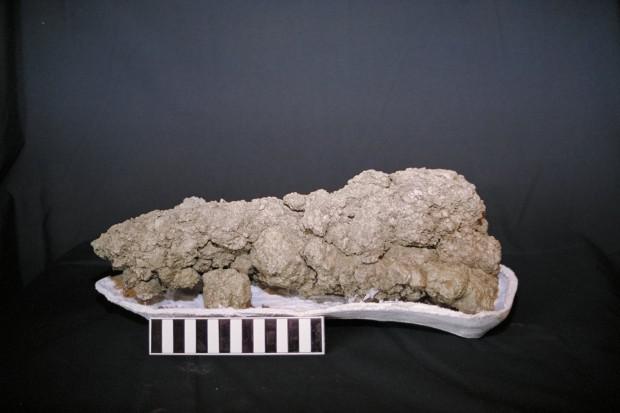
When scientists think carefully about the book "Dendzherfildy fossil world» (Rodney Dangerfield - American comedian), coprolites finally get the proper respect in paleontological circles. According to National Geographic, «some scientists go very far, and today claim that fossilized feces are far more intriguing - though uncharted - the area in the study of dinosaurs».
6. Who knows, maybe one day coprolites inspire someone to make a movie like "Jurassic Park"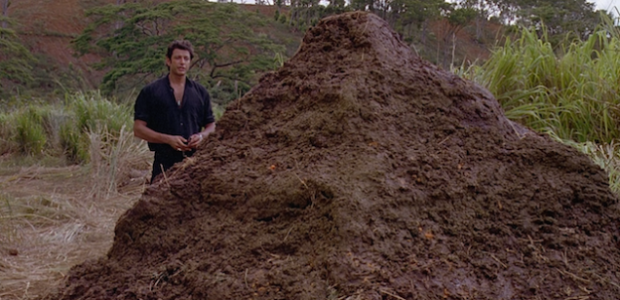
Hendrik Poinar, director of the Center studies of ancient DNA at McMaster University, was the first researcher who managed to extract DNA from coprolites. And he is the grandson of the entomologist George Poinar whose work on ancient insects frozen in amber, inspired by the writer Michael Crichton to create novel "Jurassic Park." And in the film adaptation of the novel, as you remember, there is one memorable scene with a huge pile of dinosaur feces.
7. The oldest human feces 50,000 letOstatki feces, whose existence has been documented in the past month in PLOS ONE, suggest that Neanderthals ate a lot more vegetables than previously thought.
8. And this is the blue whale feces look, if you look at them from samolёta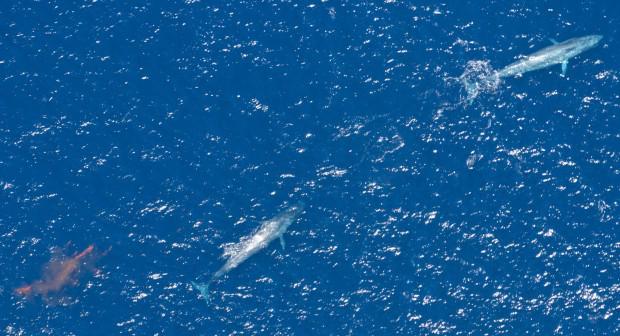
You see the reddish band on the left? This large amount of faeces of a blue whale, a kind of "oceanic braking distance", measuring about several cars Volvo.
9. But ... why are they red? Such color whale feces are due to iron-rich krill shells, which makes up a large part of the diet of a whale. When blue whales empty your bowels, they shed most of this iron back into the water, where it stimulates the growth of phytoplankton. A phytoplankton, in turn, serves as a "carbon trap", which is annually removed from the atmosphere of the Earth about 400,000 tons of carbon.
10. "Bobbin 'faeces snail looks like this:
11. But ... why they painted such "fruit" colors? When garden snails eat colored paper, they excrete colored feces that Dutch designer Leske Shroyder hopes in the future to use as material for colorful floor tiles.
12. Okay, but why my feces are "fruit" color? If you care about it a lot, then you need to the Mayo Clinic. There's some point decided that enough people worry about the color of their feces, and created a web page that is called: "The color of your stool: when to worry».
13. hypochondriac may not want to read the above page
- Your feces green? Either you have recently eaten green vegetable leaf or food too quickly passes through your intestines.
- Your stool bright red? This is probably the beets. On the other hand, it could be hemorrhoids.
- Your stool yellowish, greasy and smelly? You may be a violation of the suction function of the intestine. On the other hand, perhaps this morning you just ate too much cereal.
- Your feces black? Whether it's internal bleeding, or you ate some black licorice. 14. The notes to the ancient manuscripts found scenes of defecation and "sortirny jokes"

15. Feces penguins can be seen from kosmosa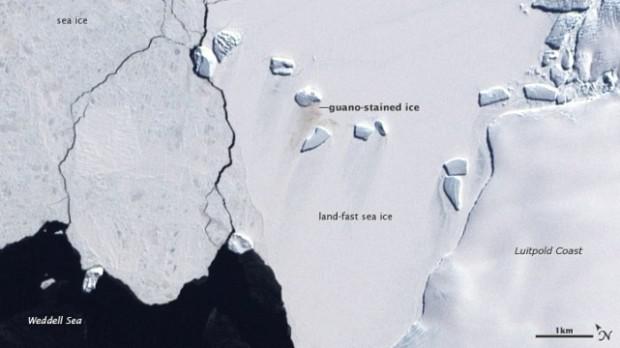
16. Penguins cocoa enviable siloyIssledovanie Adélie and chinstrap penguins showed that at the time of defecation pressure in the intestines of these birds are four times higher than the pressure in the intestines of the average person.
17. Do not tell the newspaper where you can find an illustration of the above process? That's one of the best illustrations of the kind that has ever appeared in the peer-reviewed journal:
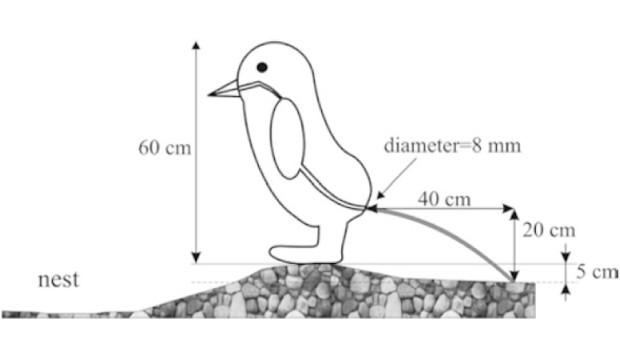
18. Feces and LuneI there are some "extreme environmentalists" who is extremely concerned about the protection of these feces.
via factroom.ru































